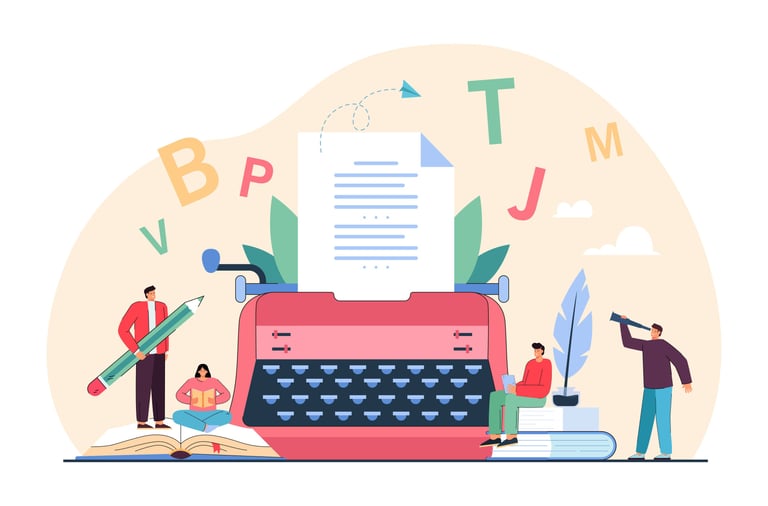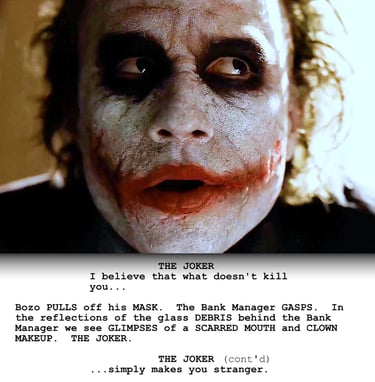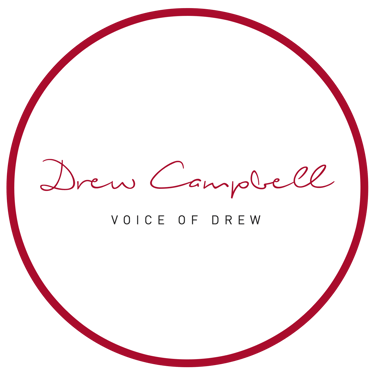Script Analasys
The Dark Knight Opening Scene
SCRIPT, STORYBOARD AND PREVIS
Drew Campbell
10/9/20252 min read


3 ACT STRUCTURE
Scriptwriting is a fine art and the 3 act structure should be stuck to. Good storytelling relies on a solid foundation. Without a clear structure, even the best stories can fall flat. Understanding structure is key to crafting engaging narratives. While not every story adheres to the same blueprint, many follow familiar patterns. Starting with a structured approach is a smart way to begin. Think of it as a tool, not a restriction. Master the basics, then feel free to experiment. At the heart of every great story, there’s a structure.
Story Beats is the key to line by line writing. But what is a beat? “Beats are the smallest building blocks of a story, used by writers to communicate elements of the story world, its characters, and the unfolding events. Each beat represents a brief interaction that always includes an input and typically produces an output.” (StoryGrid).
The article further breaks down beats into three broad categories:
Active Build-Up Beats, where avatars interact and develop relationships, even through disagreement.
Reactive Break-Down Beats, where characters encounter something novel or unexpected they can’t immediately process, causing a kind of breakdown in interaction.
Binding Beats, these serve to connect or “glue” the Active Build-Up and Reactive Break-Down beats, and include:
World-Building beats (describing the story’s arena, characters, and capabilities), Camera-Shifting beats (shifting the reader’s attention among times, places, or characters), Transition beats (moving smoothly between surface actions, deeper inner processing, or thematic meaning).
The article emphasises that reading or writing at the beats level helps an author manage energy, information flow, and meaning to the audience, going beyond grammar and syntax to focus on how every line serves the “controlling idea” of the narrative.


References:
Story Grid (2023) Story Beats. Available at: https://storygrid.com/story-beats/ (Accessed: 9 October 2025)
Building the Dark Knight Screenplay by Dan Calvisi PDF (actfourscreenplays.com) (Accessed: 9 October 2025)
We watched the opening scene of **The Dark Knight** and analysed the script to understand its structure. "The Dark Knight is an excellent example of constructing an engaging story centred around a theme, one of the key dramatic elements in the basic story framework." (Calvisi)
The opening scene of The Dark Knight immediately establishes the film’s tone and central themes of chaos, order, and moral ambiguity. Set in broad daylight, the sequence begins with an aerial view of Gotham City before cutting to a group of masked criminals carrying out a meticulously planned bank robbery. Each participant wears a clown mask and follows specific instructions from an unseen leader known only as “the Joker.”
The Dark Night - 2008
As the heist unfolds, the robbers systematically betray and kill one another, revealing the Joker’s manipulation and his willingness to sacrifice anyone to achieve his aims. The twist ending, when the final surviving robber removes his mask to expose himself as the Joker, introduces him as a figure of pure unpredictability and control, embodying the film’s theme of calculated chaos. Stylistically, Christopher Nolan’s use of IMAX cinematography, natural lighting, and tight pacing grounds the sequence in realism while setting a high level of intensity from the start, creating one of the most memorable introductions to a villain in modern cinema.
Business address: Voice of Drew, Carlisle, CA2 6ER | UTR: 7259771174 Copyright Drew Campbell 2024
